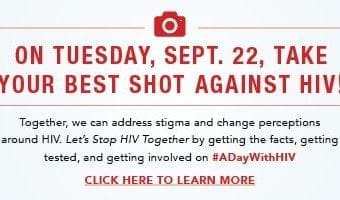Signs of BPD in Teens: How to Diagnose and How to Help Them
Borderline Personality Disorder (BPD) is one of the most misunderstood mental health conditions. People with BPD are often referenced in a negative light in the media as crazy killers or psychotic ex-girlfriends. This complex personality disorder has long had stereotypes associated with it, causing stigma and making it hard for some to have open conversations about their illness.
Age, home life and culture all play a role in the perception of BPD. Some symptoms may present as “normal”, and be written off as typical teen behavior, especially in a dysfunctional family home.
Diagnosing BPD in teens can be difficult to do due to the normal way teen personalities change throughout their development. In this article, I discuss some key signs that could mean your teen may have BPD and treatments that can be effective.

Photo Credit: Clearfork Academy
The Basics of Borderline Personality Disorder
BPD is a complex mental health condition with a lot of stigma. People with BPD often struggle with mood swings, fears of abandonment and an unstable self-image. It is one of the ten personality disorders that have a formal diagnosis.
About 1.6% of adults in the United States are diagnosed with BPD, although this number could be higher as BPD sometimes gets misdiagnosed as PTSD, Bipolar Disorder or ADHD.
BPD diagnosis must include 5 or more of the following:
- Intense fear of abandonment
- Unstable self-image
- Chronic feeling of emptiness
- Angry outbursts to small problems
- Suicidal behavior or self-harm
- Paranoia or dissociation
- Emotional instability
- Impulsive or reckless behavior
- Idealization and devaluation that leads to unstable relationships
It’s common to see patients with BPD struggle with co-occurring mental health problems such as depression, substance abuse, or eating disorders.
What Does BPD Look Like in Teens?
Teens with BPD often get labeled as being overly dramatic, emotionally unstable or attention-seeking. Personality during the teenage years is still being formed and it can be difficult to diagnose these disorders.
Teens with BPD often self-harm or harm others during aggressive outbursts. They may cut or burn their skin, or punch walls. However frequent self-harm behaviors or other symptoms listed below are not normal for the average teen.
Teens who self-harm do not always have the intent to hurt themselves. Often they experience a loss of control, or feel overwhelmed by emotions they can't explain. Self-harm may be a method they use to numb pain or call for help.
Teens with BPD may also complain about feeling empty. Self-harm or impulsive behaviors such as with drug use may be used to “feel something”. Teens with BPD may also express that they feel out of touch with reality or do not feel like they are real.
Signs of BPD in Teens
BPD has some pretty extreme symptoms that make it difficult for teens to form and build connections with others. They may be labeled as the bad apple in school from frequent fights or explosive outbursts. Some signs parents and teachers can be mindful of include:
- Intense anger
- Emotional outbursts (crying, screaming, punching walls)
- Unstable relationships with friends and family
- Overly sensitive (may take things very personally or to an extreme)
- Intense fear of abandonment (can be present as avoiding relationships to avoid abandonment)
- Difficulty expressing themselves
- Feeling empty, out of touch with reality or not real
- Self-harm (scars on legs or arms, frequently wearing sweaters even in warm weather to cover scars, burn marks)
- Extreme infatuation that can lead to stalking behavior
- Drug use or binge drinking
How Do Teens Get Diagnosed with BPD?
BPD follows the same diagnostic criteria for teens as adults. The only difference is that in teens symptoms must be present for at least one year. Diagnosis is done by either a psychiatrist, psychologist or licensed social worker.
The assessment may include a detailed medical history, in-depth interviews and self-questionnaires.
As with adults, it is normal for teens to be misdiagnosed at first with PTSD, ADHD or Bipolar Disorder. It is also common for teens to have co-occurring mental health disorders.
How Does BPD in Teens Get Treated?
Supporting a teen with BPD is no easy task. Unstable home environments and problems in school or the community outside of your control can affect your teen. Providing a safe space with on-going compassion and support can be extremely helpful to teens with BPD who are often very sensitive.
Due to the severity of a BPD diagnosis and the high risk of self-harm, drug use or suicidal behaviors, it is essential to seek professional help if your teen has symptoms of BPD.
Two treatments most commonly used to help manage BPD symptoms in young people include:
Dialectical Behavioral Therapy (DBT)
DBT was developed to help people with BPD. It draws from some elements of Cognitive Behavioral Therapy plus mindfulness. It can help teens become aware of their emotions, learn to tolerate distress and navigate relationships with others.. During DBT sessions teens may learn:
- Awareness of their emotions and what situations trigger them
- Communication skills to build healthy connections with others
- Acceptance of situations they have no control over
- More positive experiences
- Ways to swap self-destructive behaviors for less intense behaviors that still provide the same function (instead of cutting oneself, using a rubber band on the wrist)
- Activities to engage in that make them feel good about themselves (art, music, dance, volunteering)
General Psychiatric Management (GPM)
GPM provides a blend of treatment methods to build a specialized care plan. This may be different for each person but can include a mix of therapeutic programs such as DBT, group support, medication management and school-based or home-based therapy.
There is no specific medication to treat BPD but sometimes antidepressants, antipsychotics or mood stabilizers may be used to manage symptoms.
The important thing to consider is that we should always pay attention to the signs and seek professional help if you suspect your teen is struggling with BPD. The best approach is early diagnosis.
Sources
Borderline Personality Disorder in Teens. Mass General Brigham McLean Hospital.
Larrivée M. P. (2013). Borderline personality disorder in adolescents: the He-who-must-not-be-named of psychiatry. Dialogues in clinical neuroscience, 15(2), 171–179.





